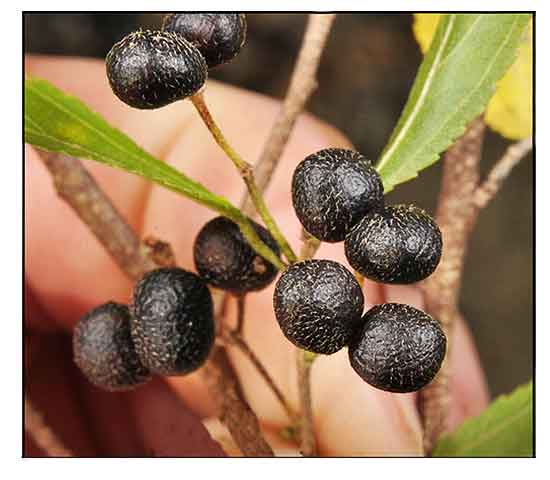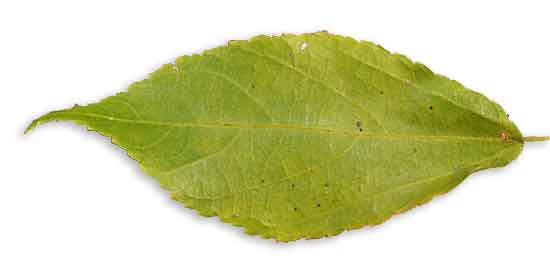 Gen info Gen info
- Grewia is a large genus of flowering plants in the mallow family Malvaceae. It was formerly placed in either Tiliaceae or Sparrmanniaceae family.
- The genus was named by Carl Linnaeus to honor the botanist Nehemiah Grew (1641-1712) from England, a leading plant anatomist and microscope researcher of his time, whose study on pollen laid the groundwork for modern-day palynology. (4)
Botany
Grewia bilamellata is a shrub, 3-4 m tall. Leaves alternate; stipules 1.5 mm long, caducous; petiole 3-5 mm long; blade lanceolate, 4-6 cm × 1.5-2 cm, base obtuse, margin dentate, apex pointed. Inflorescence an axillary, 3-flowered cyme; sepals 5, 7-8 mm long; petals 5, half as long as sepals. Fruit a subglobose, glabrous capsule. (1)
Distribution
- Native to the Philippines.
- Also native to Vietnam.
 Constituents Constituents
- Bioassay-guided fractionation of dried leaves, twigs, and stems of Grewia bilamellata isolated 12 compounds. Six of the isolates were 3α,20-lupandiol (1), grewin (2), bilagrewin (3), nitidanin (4), 2α,3β-dihydroxy-olean-12-en-28-oic acid (5), and 2,6-dimethoxy-1-acetonylquinol (6). Compounds 1, 2, and 3 were a new triterpene, a new coumarinolignan, and a new neolignan, respectively. Other known compounds isolated were 8-O-4'neolignan guaiacylglycerol-ß-coniferyl ether isomers (threo and erythro), cleomiscosin D, icariol A2, ciqujiatone, and daucosterol. (see study below) (3)
Properties
- Studies have suggested antimalarial, antioxidant properties.
Parts used
Leaves, aerial parts.
Uses
Edible
- No information available on edibility of the fruit.
Folkloric
- No reported folkloric medicinal use in the Philippines.
Others
- Rope: Bast is made into a weak rope that deteriorates rapidly under wet conditions. (1)
Studies
• Antimalarial / Grewin / Leaves, Twigs, Stems: Bioassay-guided fractionation of dried leaves, twigs, and stems of Grewia bilamellata isolated 12 compounds. Five of the isolates, 3α,20-lupandiol (1), grewin (2), nitidanin (4), 2α,3β-dihydroxy-olean-12-en-28-oic acid (5), and 2,6-dimethoxy-1-acetonylquinol (6), showed varying degrees of in vitro antimalarial activity against Plasmodium falciparum, but were devoid of significant cytotoxicity to human oral epidermoid KB cancer cell line. (see constituents above) (3) Chloroform extracts of aerial parts exhibited antimalarial activity against the D6 and W2 clones of P. falciparum.
• Antioxidant / Leaves: Study evaluated G. bilamellata leaves for phytoconstituents, total phenolic and flavonoid content, and antioxidant activity. The ethanolic extract showed highest total phenolic and total flavonoid contents with 90.69 mg GAE/g and 26.21 mg RE/g, respectively. The EE also showed most intense DPPH and H2O2 scavenging activities, with IC50s of 59.96 and 59.24 µg/ml, respectively. Results suggest a potential source of antioxidants. (3)
Availability
Wild-crafted.
|

![]()





